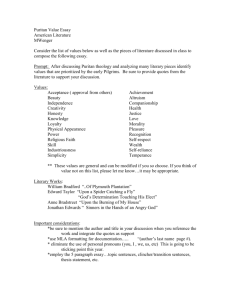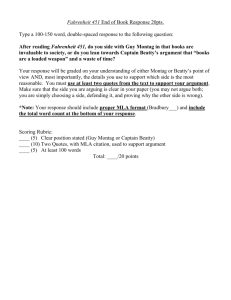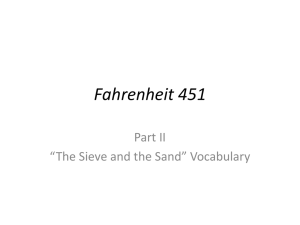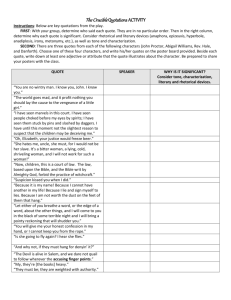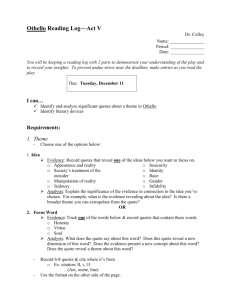writing a literary essay
advertisement
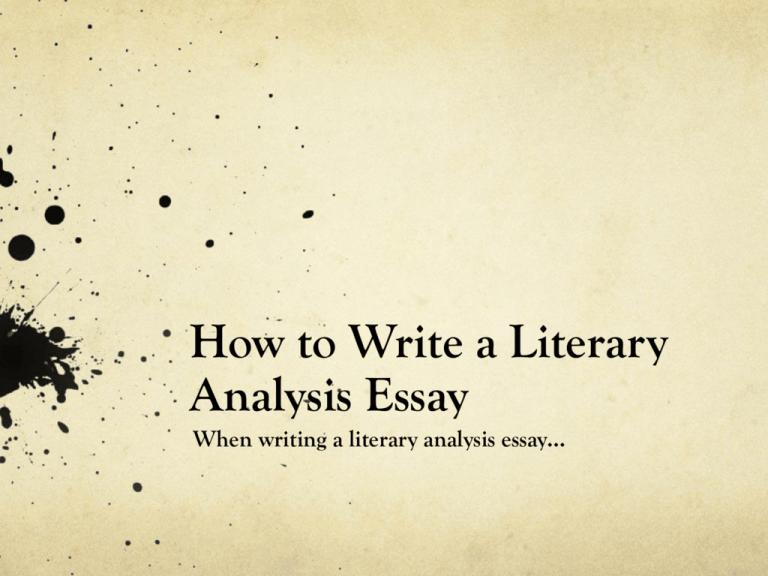
How to Write a Literary Analysis Essay When writing a literary analysis essay… Think/Pair/Share What do you need to remember when creating a literary essay? In other words, what is your objective and how do you go about constructing your response? What’s your objective? Your main objective is not to write a simple book review. Rather, your goal is to write an essay that discusses your interpretation of the literature. YIKES - NEVER TALK IN THE PAST TENSE! One tip you should keep in mind while writing and never in the past tense. For example, you might write “In George Orwell’s Animal Farm, the animals take over the farm and develop their own independent society” rather than “ In George Orwell’s Animal Farm, the animals took over the farm and developed their own independent society.” Never, ever, ever… use “I” or “you” You should also avoid putting yourself in the literary analysis. This means you should write in the third person and never use the words “I” or “you”. However… There may be exceptions to this rule, however, depending upon your instructor. In fact, some will request a more informal literary analysis that will include the usage of these words. When in doubt, however, it is safer to use the third person. Don’t tell ME! Since literary analysis essays are not meant to simply be a book review or summary of the book, you should not retell the story in your essay. Rather, you need to form a thesis about the piece of literature and then explain and support the thesis you have developed. Pull in the elements, but don’t summarize. Although you are not summarizing the plot when you write a literary analysis, you will need to pull elements from the plot when writing your literary analysis. For example, when providing an analysis, you will use information from the piece of literature to help support your position. For example, if writing a literary analysis of “The Telltale Heart” by Edgar Allen Poe, you might make the assertion that the narrator is insane. Terms that you should try to include and to use when analyzing the piece include: • Character • Theme • Setting • Rhyme • Point of view • Alliteration • Symbols • Imagery • Figurative language • Protagonist A More Professional and Respectable Piece – YES! For example, rather than saying “The story shows that people are like animals by giving the animals human characteristics,” you should say “The piece contains vivid symbols and images to reveal the animalistic nature of humans.” Although both pieces express the same idea, the second sentence reveals a stronger understanding of literature and literary terms. Embedding Quotes Think/Pair/Share What does it mean to embed a quote? To embed or integrate a quote means to blend it into an original sentence. There are different levels of blending quotes. Basic Level The writer introduces the quote with a simplistic sentence starter, such as The author explains that, “__________________” (__). We want you to try for the proficient or advanced level, not basic. Proficient The writer introduces the quote and provides a context for it. Example: In the second stanza, he appeals diplomatically to the landlord’s self-interest: “These steps is broken down. / When you come up yourself / It’s a wonder you don’t fall down” (6-8). Advanced The writer sandwiches the quote inside the analysis. Example: Although the reader might suspect that the cockroaches did not actually come out to see “what was up,” Steinbeck’s wording nevertheless proves his point. How are you doing so far? Should we continue? The Mechanics – An example with a : (colon) Introduce the quotation with a complete sentence and a colon. This is an easy rule to remember: if you use a complete sentence to introduce a quotation, you need a colon after the sentence. Albert Einstein reminds us all to never waste our life being selfish: “Only life lived for others is worth living.” Use an introductory or explanatory phrase, but not a complete sentence, separated from the quotation with a comma. You should use a comma to separate your own words from the quotation when your introductory or explanatory phrase ends with a verb such as “says,” “questions,” “believes,” “ponders,”…. You also use a comma when you introduce a quotation with an attribution phrase such as According to Mr. Ditch, “…” Make the quotation a part of or your own sentence without any punctuation between your own words and the words you are quoting. Notice that the word “that” is used in this example: Jerry Seinfeld once said that there are “Four Levels of Comedy: make your friends laugh, make strangers laugh, get paid to make strangers laugh, and make people talk like you because it’s so much fun.” When it is used as it is in the example, “that” replaces the comma which would be necessary without “that” in the sentence such as Jerry Seinfeld says, “Four Levels of Comedy [exist]: make your friends….” Use short quotations – only a few words – as part of your own sentence. When you integrate quotations in this way, you do not use any special punctuation. Instead, you should punctuate the sentences just as you would if all the words were your own. Example: An Irish saying reminds us that friends that “gossip with you” may also be friends that gossip about you. YOUR TURN Author: Ray Charles – “I never wanted to be famous. I only wanted to be great.” Author: Dick Clark - “Music is the soundtrack of your life.” Author: Homer Simpson – “Remember as far as anyone knows, we’re a nice normal family.” Author: Indira Gandhi – “Where there is love there is life.” Author: Red Barber – “Baseball is dull only to dull minds.” Author: Vince Lombardi – “If winning isn’t everything, why do they keep score?” If you want more structure, use this formula: Transition words + the situation/context + pronoun/noun + verb + quote Example: Bradbury illustrates this idea when Montag finally rids himself of Beatty, who realizes “he ignored his own principles to feed his vision of himself” (81). Transition words: Bradbury illustrates The situation: when Montag finally rids himself of Beatty Pronoun: who Verb: realizes Quote: “he ignored his own principles to feed his vision of himself” (81). Robot Writing – write your claim for the body and select meaningful quotes. Next, incorporate those quotes into your sentences using the techniques you learned. Now You Try It! After constructing your claim and developing your topic sentences, find relevant quotes and add your commentary: TS: While Beatty thinks books confuse people’s thoughts and make them unhappy, Montag thinks books and the authors behind them help people make informed decisions, which is more important than happiness. Example Embedded Evidence (Quotes): For example, when Beatty tries to reason with Montag to conform to society’s expectations, he lectures, “The important thing for you to remember, Montag, is we're the Happiness Boys... you and I and the others. We stand against the small tide of those who want to make everyone unhappy with conflicting theory and thought” (52). Next, follow up with 2 pieces of commentary. Secondly, during Montag’s transformation, Beatty proposes “ _________________________________ ”(____). Next, follow up with 2 pieces of commentary. Lastly, close up the paragraph while transitioning into the next body paragraph. Review What does it mean to embed a quote? Explain the BASIC, PROFICIANT, and ADVANCED method. Create one of each from the list below with relevant quotes that connect to your claim. RATE yourself again: How well can you embed quotes into your sentences? MLA Format for Research Writing Yes, it’s boring, but you’ve GOT to know it!!!!!!! View MLA PPT!
